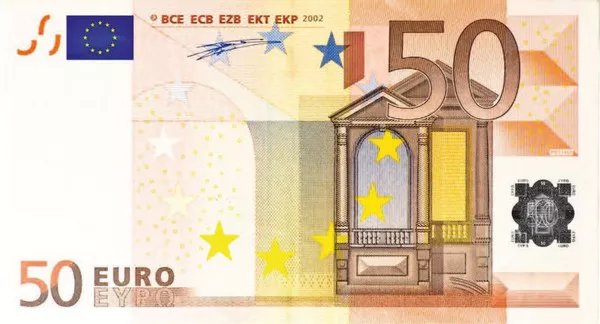The European Central Bank (ECB) plays a key role in shaping the economic landscape of the Eurozone. One of the most closely watched aspects of its policy is the interest rate decisions taken at its meetings.
As we enter 2023, there is a lot of curiosity and anticipation about what interest rates will be at the next ECB meeting. In this article, we take a closer look at the ECB’s 2023 interest rate plans, examine the latest decisions, and explore the frequency of ECB meetings.
What does the ECB’s 2023 interest rate schedule look like?
Like many central banks, the ECB follows a predetermined meeting schedule to provide insight into when interest rate decisions are made. In 2023, the European Central Bank will continue to hold regular meetings according to the established schedule to review economic conditions and monetary policy. The ECB’s interest rate schedule includes eight meetings scheduled throughout the year to regularly review and potentially adjust interest rates.
What is the latest interest rate decision from the European Central Bank?
The ECB’s latest interest rate decision is an important indicator of its monetary policy stance. The European Central Bank kept key interest rates unchanged at its December 2022 meeting. The main refinancing operation interest rate remains at 0%, the marginal loan facility interest rate is 0.25%, and the deposit facility interest rate is -0.5%. The decision reflects the ECB’s commitment to supporting the euro zone economy by keeping borrowing costs low.
How many meetings does the European Central Bank have in a year?
Understanding the frequency of ECB meetings is crucial to tracking interest rate decisions and their potential impact on the economy. In 2023, as in previous years, the European Central Bank will hold a total of eight meetings. These meetings, held approximately every six weeks, provide a regular opportunity to assess economic developments and decide on monetary policy. This frequency allows the ECB to remain sensitive to changing economic conditions and financial market dynamics.
How often does the European Central Bank meet?
The ECB meets very frequently, maintaining a consistent schedule throughout the year. Meetings are held approximately every six weeks, which translates to approximately eight meetings per year. This rhythm helps the ECB maintain transparency and allows financial markets, businesses and the public to predict when key decisions on interest rates and monetary policy are likely to come.
Factors affecting the next ECB interest rate meeting in 2023
Several factors will influence the ECB’s interest rate decision in 2023. It’s worth considering these factors to get a better idea of what to expect at your next meeting:
1. Inflation rate: The European Central Bank monitors inflation rates closely. If inflation persists below its target of close to but below 2%, it may consider adjusting interest rates to stimulate economic growth.
2. Economic growth: The overall health of the Eurozone economy, including GDP growth and employment data, will influence the ECB’s decision-making. Strong economic growth could lead to a more hawkish stance and potential interest rate hikes.
3. Global Economic Conditions: The ECB also considers global economic conditions, as the Eurozone economy is interconnected with the rest of the world. External factors such as geopolitical events and global economic trends may influence the ECB’s decision-making.
4. Market expectations: Financial market and investor expectations can play an important role in the ECB’s decision-making process. Market participants pay close attention to signals from the European Central Bank, and any deviation from expectations could lead to market volatility.
5. Monetary Policy Strategy Review: The European Central Bank has launched its 2020 monetary policy strategy review. The outcome of the review could lead to changes in the ECB’s inflation target and the way it conducts monetary policy.
Latest Trends in ECB Interest Rate Decisions
The European Central Bank has maintained a low interest rate environment in recent years to stimulate economic activity and respond to the challenges posed by the COVID-19 pandemic. The epidemic has brought unprecedented monetary and fiscal support, and interest rates have become an important tool of the European Central Bank. The central bank lowered the deposit facility rate into negative territory to encourage bank lending and investment.
While the ECB expressed its commitment to easing policy, it also hinted at possible changes ahead. As economic conditions improve, the ECB may consider gradually normalizing monetary policy. However, the speed and timing of this normalization will depend on a variety of factors, including those mentioned earlier.
Market expectations for the next European Central Bank interest rate meeting in 2023
Market expectations play an important role in influencing the outcome of central bank meetings, including those of the European Central Bank.
As we look ahead to the next ECB meeting interest rate in 2023, it’s essential to consider what the markets are anticipating.
At the beginning of the year, market expectations indicate that the ECB is likely to maintain its accommodative stance, with interest rates staying at their current levels. The ongoing uncertainty related to the pandemic and economic recovery will likely encourage the ECB to provide continued support.
However, it’s crucial to remember that market expectations can evolve rapidly based on incoming economic data and the ECB’s communications. Traders and investors will be closely monitoring ECB statements and speeches from its policymakers for any hints or guidance regarding future interest rate decisions.
Conclusion
The next ECB meeting interest rate in 2023 holds the key to shaping the economic landscape of the Eurozone for the year. As the ECB adheres to its regular schedule, holding eight meetings throughout the year, the outcomes of these meetings will be influenced by a myriad of factors, including inflation rates, economic growth, global conditions, and market expectations. The central bank’s recent trends and market expectations suggest a continued commitment to an accommodative stance, but the future path may witness gradual changes as the Eurozone’s economic recovery progresses.
Stay tuned for updates and insights into the ECB’s monetary policy decisions throughout the year as we closely monitor its interest rate moves and their impact on the Eurozone economy.
Related Topics:
How Does the ECB Work: A Comprehensive Overview
Everything You Need to Know About ECB Mortgage Rate
All You Need to Know About ECB Rate for Tracker Mortgages

























